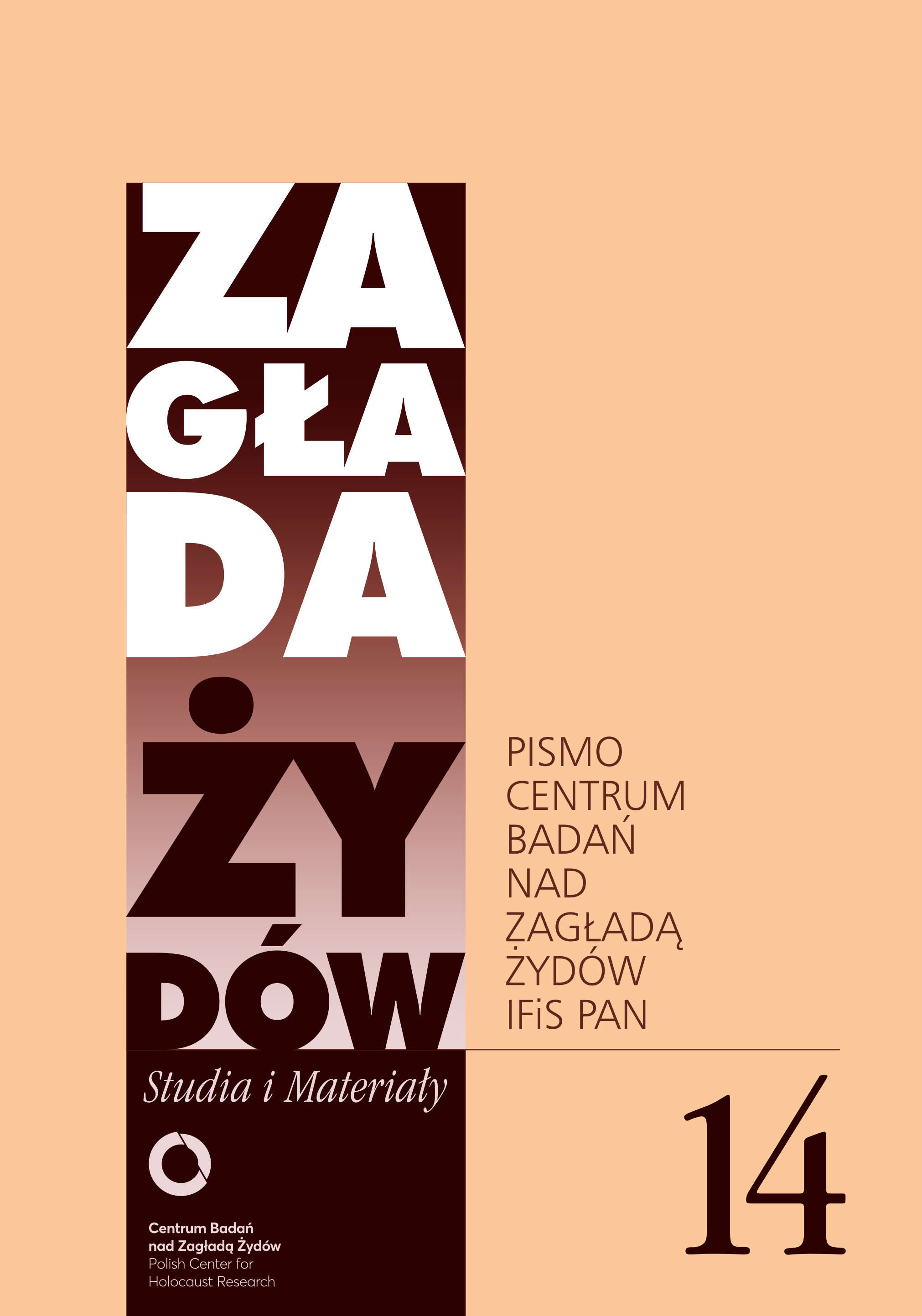Polscy obserwatorzy Zagłady. Studium przypadków z zakresu sztuk wizualnych – uwagi wstępne
Polish Bystanders to the Holocaust. Study into Examples from the Scope of Visual Arts – Preliminary Remarks
Author(s): Luiza NaderSubject(s): Jewish studies, Visual Arts, Ethics / Practical Philosophy, Studies in violence and power, WW II and following years (1940 - 1949), Fascism, Nazism and WW II, History of the Holocaust, Identity of Collectives
Published by: Stowarzyszenie Centrum Badań nad Zagładą Żydów & IFiS PAN
Keywords: Felicjan Szczęsny Kowarski; Krzysztof Henisz; Aleksander Świdwiński; Mieczysław Wejman; bystander; observer; empathy; modernity; 20th-century art; Holocaust;
Summary/Abstract: This text is devoted to selected visual records produced in the face of the Holocaust by the following artists: Felicjan Szczęsny Kowarski, Krzysztof Henisz, Aleksander Świdwiński, and Mieczysław Wejman. Vast majority of these works of art comes from the war period (1940– 1944), with a few produced immediately after the war (1946–1948). The author analyzes predominantly their referential layer as well as the modes of representation they employ, the dating of speciϐic objects, and the references to their accompanying historical framework. She also reflects on identity, motivations, and the degree of existential, ethical, and artistic engagement of the artists in the face of the Holocaust, which was happening right before their eyes, in their immediate vicinity. The central question Nader directs not only at the artists and their works, but also at the field of art history is one that Jan Tomasz Gross has asked: “What did you do/What was done to help the Jews?” bearing in mind that doing nothing was also an action with consequences. The most important conception developed in this text is the category of the artist – a close observer of the Shoah. Moreover, this question about Polish bystanders also makes her inquire about the foundations of the field of art history as such. The author postulates changing the episteme in the space of the contemporary and modern history of art in Poland as there still has been no response to the challenge posed by works produced in the face of the Holocaust and from the Holocaust.
Journal: Zagłada Żydów. Studia i Materiały
- Issue Year: 2018
- Issue No: 14
- Page Range: 165-211
- Page Count: 47
- Language: Polish

